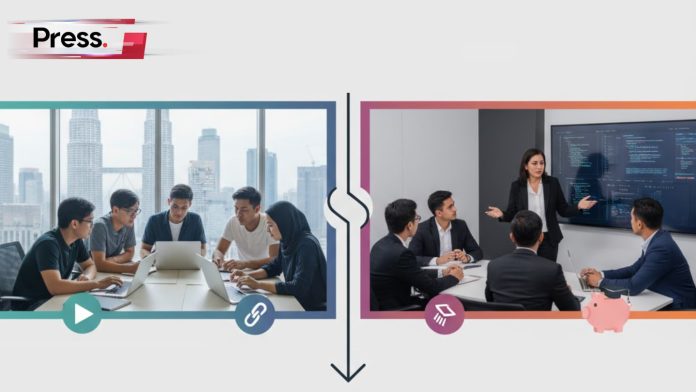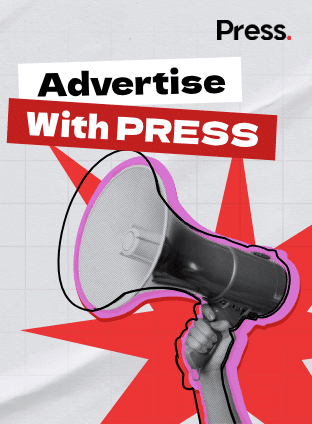Key Takeaway
- Free AI courses online (MOOCs, YouTube, community resources) let you begin learning without financial risk but often lack structure and credential weight.
- Paid AI courses offer guided curriculum, assessments, mentor support, and recognized certificates.
- Choose based on your goals, budget, learning style, and career plan.
- A hybrid approach—start with free, then upgrade to paid—often gives the best balance.
- Use the decision checklist below to see which route suits your situation.
Table of Contents
ToggleIf you’ve Googled “ai courses online free” or wondered whether investing in paid AI courses is worth it, you’re not alone.
With many free AI courses and numerous paid alternatives flooding the market, choosing the right path can be confusing.
This guide compares free vs. paid AI learning routes, helps you decide which fits your needs, and answers common doubts with an FAQ section.
Free AI Courses: Pros, Cons & Examples
Pros of Free AI Courses
- Zero cost (or minimal cost). No financial barrier to entry.
- Flexible pace & schedule. Learn when you want — fits around work or studies.
- Great for exploration. You can “test the waters” without commitment.
- Access to community/contributions. Open-source materials, public forum help, and sharing.
- Diverse perspectives. Many free offerings from global educators, local experts, and niche topics.
Cons of Free AI Courses
- Lack of structure & guidance. You may jump between topics without a coherent path.
- Limited feedback or hands‑on support. No one reviews your assignments or helps you debug.
- No formal certification (or low credential value). Employers may weight paid credentials more.
- Content may lack depth or coherence. Some tutorials stop at introductory level.
- No guarantee of updates or maintenance. Modules may become outdated.
Examples of Free AI Resources in Malaysia / Globally
- YouTube playlists and blogs; Kaggle Notebooks for hands-on practice.
- edX offers a free audit track on many courses (access to materials; graded items/certificates excluded).
- Coursera provides free access on some courses (e.g., Full Course, No Certificate / Partner-supported free access); availability varies by course.
- Udacity lists a catalog of free standalone courses (separate from paid Nanodegrees).
- Government/community programs like AI untuk Rakyat (Malaysia) — ~4 hours, multi-language, with digital badges.
Paid AI Courses: Benefits, Risks & Examples
Benefits of Paid AI Courses
- Structured curriculum & roadmap. You know what comes next and how topics build on each other.
- Instructor or mentor support. You can ask questions, get feedback, and clarify doubts.
- Hands‑on projects and graded assessments. Helps solidify learning and show proof of work.
- Certification and credentials. Many paid courses issue certificates recognized in industry or academia.
- Community and networking. Cohorts, peer groups, alumni, Q&A forums.
- Regular updates & maintenance. Paid providers tend to keep content current.
Trade‑offs / Considerations with Paid Courses
- Cost. Some courses are expensive, possibly a barrier if you’re on a budget.
- Time commitment. Cohort courses may require fixed schedules or deadlines.
- Risk of mismatch. Not all paid courses deliver value or quality; some are overpriced.
- Lock‑in. Once you enroll, you may feel committed even if the course isn’t working for you.
- Overemphasis on certification vs. skills. Don’t fall in the trap of chasing certificates rather than competence.
Examples of Paid AI Courses (Malaysia & Global)
- Specialist tracks (e.g., Coursera Specializations) — pricing varies by course and institution.
- Local bootcamps/short courses (e.g., LEAD Data Science 360 ~RM5,199; 360DigiTMG ~RM3,900; other short programs often RM800–RM2,600 equivalent).
- Vendor certifications (e.g., AWS ML – Specialty exam fee USD $300; AWS ML Engineer – Associate USD $150; TensorFlow Developer Certificate available via Google).
- Private instructor-led or cohort programs in Malaysia; check provider syllabi, projects, and mentor support.
PRESS, As a PR Agency in Malaysia help education providers and training platforms craft PR strategies that spotlight their courses effectively.
Free vs. Paid: Side-by-Side Comparison
Feature | Free AI Courses Online | Paid AI Courses |
Cost | Free / minimal | Moderate to high |
Structure & roadmap | Weak / ad hoc | Strong, guided |
Instructor support | Rare / peer | Usually included |
Projects & assessment | Self-assigned or none | Graded, reviewed |
Certification value | Informal / limited | Recognized credential |
Updates & maintenance | May lag | Regularly maintained |
Networking & cohort | Variable | Cohort-based community |
Risk | Low financial risk, possible time waste | Financial risk if quality poor |
Decision Checklist: Free, Paid, or Hybrid
Use this checklist to guide your choice — score each item “Free,” “Paid,” or “Hybrid (mix).”
Goal clarity
- If your goal is “just to see what AI is” → Free is fine
- If your goal is “get a job, freelance, or upskill seriously” → lean Paid or Hybrid
Budget constraints
- Very tight budget → Free
- Moderate budget (you can invest) → Paid
- Willing to invest later → Start free, then upgrade
Preferred learning style
- Self‑paced, independent → Free
- Guided, step‑by‑step, with accountability → Paid
Need for credential / certification
- Want CV credential, employer recognition → Paid
- Learning for interest, not formal value → Free suffices
Support & feedback needs
- You’re confident debugging/learning alone → Free
- You benefit from mentors, feedback → Paid
Time commitment / schedule flexibility
- You need total flexibility → Free
- You can dedicate fixed hours weekly → Paid may work
Long‑term path & scalability
- Free covers basics; you’ll likely need paid next → hybrid
- Paid covers entire path (beginner → advanced) → paid full
If most of your checks lean Paid, then a quality paid AI course is likely a more effective investment. If most lean Free, start with free, then consider incremental paid upgrades.
Read More: Malaysia’s Government AI Programmes
Hybrid Strategy: Best of Both Worlds
You don’t have to choose exclusively. Here’s a recommended hybrid path many learners follow:
- Explore with free resources to grasp fundamentals (Python, math, basic ML).
- Select a paid specialization focused on your domain (e.g. computer vision, NLP) later.
- Supplement paid course with free supplementary tools (open datasets, blogs, community notebooks).
- Apply learnings via projects or Kaggle to solidify understanding and build portfolio.
- Use certificate or project work from the paid portion in your portfolio or resume.
This ensures you mitigate risk (start free) but also eventually get the structured support and credential you may need.
Tips for Maximizing Learning Regardless of Course Type
- Set clear micro‑goals (e.g. “Implement logistic regression this week”)
- Build mini projects from day one — even simple ones
- Join communities or forums (Reddit, ML Malaysia, Kaggle)
- Document your learning (blog, GitHub, LinkedIn posts)
- Review, revisit, and iterate — theory + implementation cycles
- Stay updated on tools & frameworks in AI/ML (TensorFlow, PyTorch, etc.)
Disclaimer:
- All of the content was thoroughly fact-checked and verified by our editorial team to ensure accuracy, clarity, and reliability.
- Information provided is for education only. Course pricing and free-access policies change—verify details on provider sites before enrolling.
Frequently Asked Questions About Free vs. Paid AI Courses
Are free AI courses as effective as paid ones?
They are effective for foundational learning, but paid courses usually add depth, structure, and credential value.
Where can I find AI courses online free that are suitable for Malaysians?
Platforms like Coursera, edX, YouTube, and occasionally local NGO or university initiatives offer free AI resources. Keep an eye on Malaysian tech communities or government training schemes.
Do employers value certificates from free AI courses?
Employers increasingly emphasize skills and outcomes. Some recognized industry certifications can help, but many certificates (free or paid) show mixed payoff. Strong projects/portfolio and demonstrable skills typically matter most.
How much should I invest in a paid AI course in Malaysia?
Short courses/bootcamps in Malaysia commonly range from ~RM800–RM5,000 depending on depth and support (e.g., LEAD ~RM5,199; 360DigiTMG ~RM3,900). Full degree programs cost far more (e.g., UM Master of AI ~RM25,928 total). Evaluate ROI based on skills gained, portfolio, credential recognition, and career outcomes.
Can I switch from free to paid mid-path?
Absolutely. Many learners begin with free AI courses online, then transition to paid learning once they’re sure and ready for deeper, structured instruction.
What matters more: certificate or actual skills?
Actual skills matter more. Certificates help as a supplement, but your portfolio, projects, problem-solving ability, and outcomes are what employers pay attention to.


